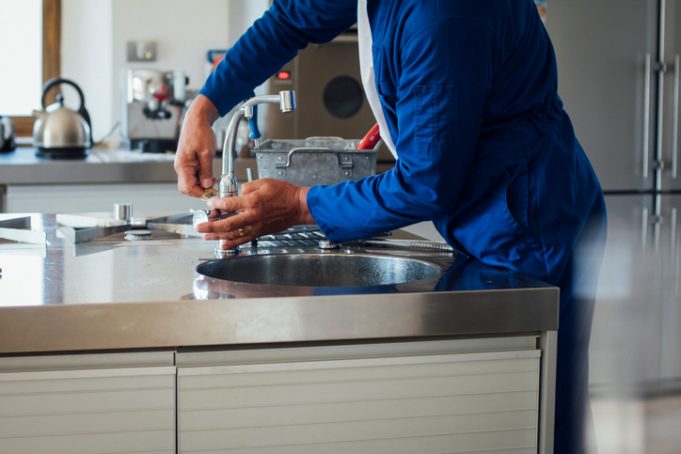Energy-efficient buildings are rising, and both real estate businesses and people are looking to save energy in buildings.
Among all factors affecting energy consumption, the plumbing system is something else.
Apart from applying this facility in your daily life, it greatly impacts your energy and water bill.
In this article, we’ll let you know how your plumbing system can help you have an energy-efficient building.
Fix all the Leakages to Avoid Wasting Water and Energy
This is a straightforward yet efficient method of reducing water usage. Technically speaking, a pipe leak is defined as a water loss, which is the same as chargeable water usage.
Therefore, you may save money on water by looking for leaks in your toilets, pipes, and faucets. Up to 20 gallons of water per day can be lost by a little pipe leak, and considerably more water can be lost by severe plumbing leaks.
Checking the water meter before and after a prolonged time of not using any water is a simple technique to find a potential leak. You could have a broken pipe someplace if your water meter has changed even though you haven’t used it.
Invest in Tankless Water Heaters
A water heater is necessary for every home. Water tanks, which were once commonplace worldwide, consumed a lot of electricity.
There are now available demand-type or tankless water heaters, which heat water directly without requiring storage tanks.
Cold water flows via a pipe and into the appliance when a water tap is turned on. A tank heater must be used once the tank has sufficiently filled with water for the heater to start heating.
On the other hand, demand-type water heaters let you control the flow rate while preventing standby energy losses.
Before replacing the system, try to have a competent team inspect your existing heater and provide an estimate. For instance, in Toronto, R & Z Plumbing is unmatched in emergency plumbing services.
Keep in mind that seeking advice before making any purchases may help you save a ton of money and ease future troubles.
Be Sure to Clean Your Appliances
One of the great ways to reduce your monthly expenses and your environmental impact is to replace old, energy-intensive appliances like water heaters, dishwashers, and washers. When it comes to replacements, seek Energy Star-certified appliances.
Use Low-Flow Showerheads and Toilet Faucets.
Toilets may be used in your bathroom as an aesthetic element in addition to their intended function. You should consider its aesthetic features of it even though not everyone is aware of them.
You should be mindful of another toilet component, particularly if you care about the environment. Yes, you should reduce your normal water intake.
Some low-flow toilets let you adjust each flush, while others save water by flushing less frequently.
The Dual-Button Toilet is a prime illustration. Thanks to its dual-flush design, you have two water-use alternatives when flushing this toilet.
These techniques must be used even if you do not care for the environment to reduce water costs.
According to experts, using low-flow toilets may reduce our annual water expenditures by up to $110 per household.
Fortunately, this choice is available with showerheads as well as low-flow toilets. A low-flow showerhead can help you save up to 40% of your typical water consumption. Showering accounts for about 20–25% of household water use.
There are two different low-flow showerhead options available to you. The first is non-aerating, which involves controlling and forcing water through tiny openings. This makes a huge water spray and may also be used to calm water spirits.
On the other hand, aerating shower heads mix water and oxygen to provide a softer, bubblier sensation.
Taking Shorter Showers
You must have heard your parents screaming at you to get in the shower right away since you’re wasting water and power!
Since taking a bath is so enjoyable, it may cause one to overindulge. However, we were unaware that our shower head was wasting water because it was continually running.
Another instance is wasted water when some of us use shampoo while the water is running.
To prevent wasting any more water, keep in mind to turn on your shower head when shampooing and take as short a shower as possible.
Have Your Plumbing System Checked Regularly
A plumbing check can assist in finding and stopping minor, otherwise undetectable leaks that lose money and produce wastewater.
Slow-moving drains may indicate obstructions or problems with your main sewage system.
In addition to possibly saving you thousands of dollars in emergency repairs, a plumbing check may help you avoid a large pipe break and the mess of a sewage backup.
Regular maintenance will keep your water heater functional. Nobody likes a water heater leak or an unexpectedly chilly shower.
Conclusion
Many think improving the efficiency of the building and the plumbing system is expensive. But they don’t consider the saving on their bills. Try to go for energy-efficient buildings and plumbing systems. This way, you’ll kill two birds with a single stone. First, you’ll save money on your bills. Second, you’ll help save the environment.














